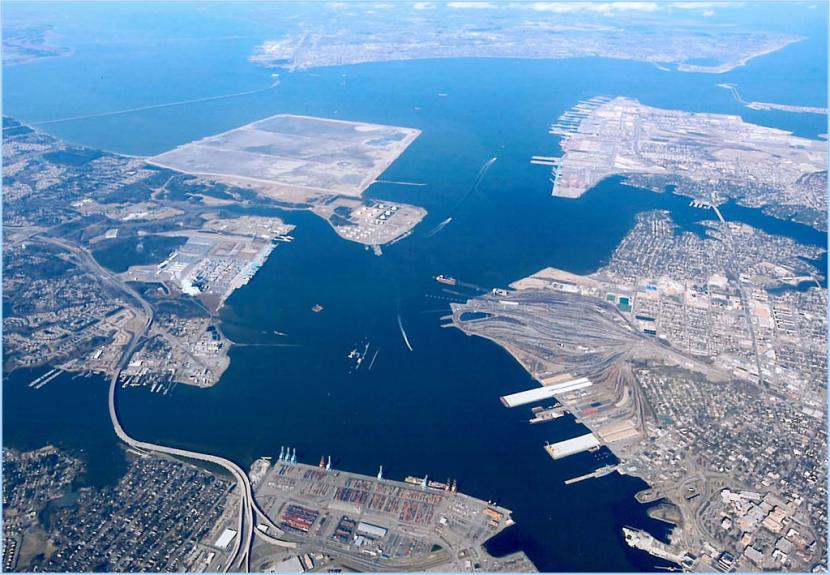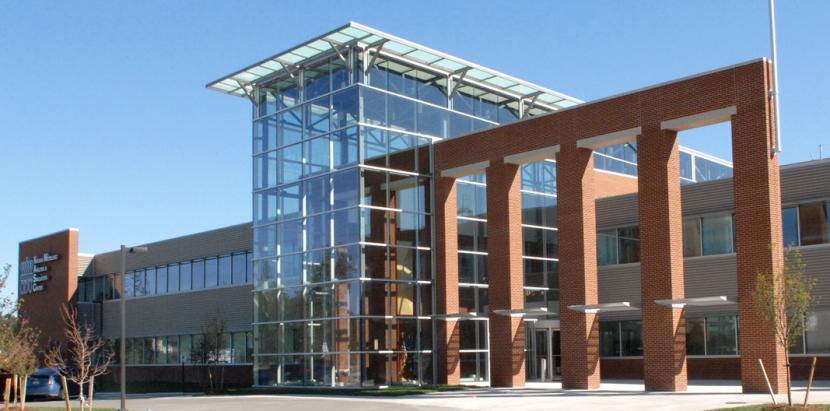By Amber Kennedy
Pumpkins still grace porches, but you may already be a bit behind on your holiday shopping through no fault of your own. The effects of COVID-19 continue to create a perfect supply chain storm - at every step of the process, our usually quick interconnected global supply networks have experienced hiccups that are leading to higher freight rates, empty store shelves and long-lead shipping estimates.
Old Dominion University's supply chain experts study where and why those hiccups are felt along the journey, from shortages in raw materials to container ship tie-ups off the West Coast to short-staffed trucking companies to new consumer purchasing patterns that show we're buying more imported products.
They say the secret to holiday shopping happiness in 2021 may rely more on attitude than sourcing the perfect gift.
True holiday shopping satisfaction might lie in adjusting expectations. "Gift givers and receivers who can adapt, be open-minded and flexible, will be happier," said Erika Marsillac, an associate professor of supply chain management. Instead of relying on tried, true and possibly out-of-stock holiday gifts, consider local brands, something more sentimental or experiential presents.
"Consumers have gotten used to almost instant satisfaction and delivery, but we will have to revise our expectations or pay more for what we used to get for less," Marsillac said.
The Slow Journey to Store Shelves
Let's say a product is making its way around the world to your neighborhood retailer.
Assuming enough raw material and staffing were available to manufacture the product, the first hurdle is securing space in the container vessels. Capacity in ships crossing the Pacific is very tight. To combat this, retailers including The Home Depot, Dollar Tree and Costco are chartering their own cargo vessels, said Ricardo Ungo, director of the Maritime, Ports and Logistics Management Institute at ODU. The institute maintains a logistics dashboard tracking imported and exported containers, air cargo and employment metrics for the Hampton Roads region.
Even if companies are able to charter a vessel, they still need to secure a spot at a port to unload the cargo, Ungo said. Recently, more than 50 container vessels were lined up at the Port of Los Angeles/Long Beach, waiting to unload their wares; many of those vessels have been at anchor for more than 11 days. On Oct. 13, President Joe Biden announced the port would shift to 24/7 operations to try to ease some of the delay.
But the headaches don't end once products arrive at port. Moving the goods out of the port, via rail or short-staffed truck-driving companies, is also slow-going. Even after the goods have started to move, there's a shortage of vacant warehouse space, creating more backlogs.
Despite the many challenges, ODU experts can offer advice on tackling holiday shopping:
It's Not Too Late, But Waiting Isn't Cheap
Prices may be higher than expected and some items will soon be in short supply, Marsillac said. She warns some of the hype is driven by retailers who are hoping to boost sales - in some cases already announcing Black Friday deals - and customers should avoid panic purchasing.
That said, Marsillac does recommend grabbing wish list items as you see them. "Shoppers should be on the lookout for the items they really want and purchase them if they're available, but still recognize that some of the noise is from retailers trying to push early sales," she said.
Tech Is Tight
Anything requiring a computer chip or superconductor is backlogged. "Particularly holiday tech toys will be snapped up as soon as available," Marsillac said.
For example, Xboxes have been in short supply for more than a year, and continue to be expensive.
Expect Shortages for Books and Alcohol
If your standby gifts for certain loved ones are pricey imported scotch or a hardcover book, it can't hurt to buy now.
Continued reports of shortages have led some states to ration liquor supply; in Pennsylvania, shoppers have been limited to just two bottles of Buffalo Trace bourbon per customer, according to a report from NPR. The challenges start with obtaining glass bottles and only increase from there.
Publishers have begun feeling the squeeze, with some postponing release dates while simultaneously struggling to resupply older books. Many books requiring color ink are printed in Asia, forcing publishers to jostle against the many other industries trying to get their products across the Pacific, according to a recent article in the New York Times. Publishers looking to print in the U.S. run into delays at the printing plants, which are short-staffed and face overwhelming demand after years of press closures.
Shopping Local Makes It Easier to Deliver on Time
If ever there were a time to shop local, the 2021 holiday season is it. "If you plan to buy an item made in Asia, your lead time is likely to be long," Ungo said.
Many factories in Asia - especially in Vietnam - were closed due to the Delta variant, or can't make more items until their current stock trapped in traffic backups at the ports is sold. "Customized items, especially ones that rely on imported components or Asian labor, will be harder to get," Marsillac said.
While the majority of imported goods come from Asia, the problems aren't isolated to one continent. The global nature of manufacturing can even impact shopping local, she adds.
"Local sourcing is great, as long as the local businesses are not relying on shipments from abroad for the different elements of a gift," Marsillac said, noting that even though the fruit in the gift basket may be local, the basket itself might be imported.
Plan for Delivery Delays
Once the gifts are purchased, wrapped and ready to deliver, their journey can still be slowed when they are placed in the hands of delivery services, including the United States Postal Service (USPS), United Parcel Service (UPS) and FedEx. The USPS already announced a slowdown of deliveries earlier this year took effect Oct. 1. Around Thanksgiving, shipping services companies will announce their "drop-dead" dates for Christmas delivery.
Most shippers have added online calculators that allow customers to enter their shipping date and find an estimated delivery date.
And when in doubt, blame the man in red and his overworked elves. "There will be a bottleneck at Santa's manufacturing plant in the North Pole," Ungo said.






